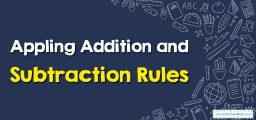How to Find Integers Equivalent Quotients
let's embark on a journey to explore the vast world of integers and their corresponding equivalent quotients. The aim of this guide is to walk you through the process of finding integer quotients that are equivalent to a given value, weaving in between concepts of division, integers, and fractions along the way.

A Step-by-step Guide to Find Integers Equivalent Quotients
Here is a step-by-step guide to find integers equivalent quotients:
Step 1: Start with a Basic Understanding of Integers
Integers are the backbone of our numeric system, acting as the complete set of whole numbers, both positive and negative, including zero. They are not fractions, they are not decimals, they are the very rudiments of mathematics.
Step 2: Acknowledge the Definition of Quotient
Next, we venture into the realm of division and quotients. In mathematical terms, a quotient is the result we get when one number, the dividend, is divided by another, the divisor. Division, as a basic arithmetic operation, is simply the converse of multiplication.
Step 3: Understand the Relationship between Integers and Quotients
Now that we’ve laid the groundwork with the basic definitions, let’s see how these two entities – integers and quotients – interact. If both the dividend and divisor are integers, and the divisor isn’t zero, the quotient is also an integer if the dividend is a multiple of the divisor.
Step 4: Determine the Question at Hand
To find equivalent quotients, we need to first ascertain what exactly our target quotient is. This will be the anchor, the beacon guiding our exploration.
Step 5: Dissect the Target Quotient
A quotient can be written in multiple ways while retaining its value. For instance, quotient \(2\) could be written as \(\frac{4}{2}\), \(\frac{6}{3}\), \(\frac{8}{4}\), and so on. You may notice, these fractions are created by taking multiples of the target quotient (\(2×1, 2×2, 2×3\), etc.) as the dividend and the multiplier as the divisor.
Step 6: Apply the Dissection to Integers
Apply the above pattern to your integer quotient. If the integer quotient is, say, \(7\), the equivalent fractions could be represented as \(\frac{14}{2}\), \(\frac{21}{3}\), \(\frac{28}{4}\), etc. All these fractions equate to the integer quotient of \(7\).
Step 7: Recognize the Generality of the Rule
This approach is applicable across all integer quotients. Remember, the key lies in the multiples. For any integer n, equivalent quotients can be found by using multiples of n as the dividend and the corresponding multiplier as the divisor.
Step 8: Identify Equivalent Quotients
Armed with this knowledge, you can now go forth and identify equivalent quotients for any integer. This is a powerful skill, allowing you to see the multitude of ways numbers interact within the arithmetic operation of division.
Step 9: Dive Deeper
If you wish to extend your understanding further, consider how this principle applies to negative integers and zero. Reflect upon the rules governing these situations. For example, for any non-zero integer \(n\), \(\frac{-n}{n}\) and \(\frac{n}{-n}\) both yield \(-1\) as the quotient.
This deep-dive exploration into the realm of integers and equivalent quotients should provide a comprehensive guide for your mathematical endeavors. Now, you are not just finding equivalent quotients, but you are understanding the underlying structure of mathematics in a more profound way.
Related to This Article
More math articles
- What Skills Do I Need for the ACCUPLACER Math Test?
- Peaks and Valleys: A Journey Through the Extreme Value Theorem
- ALEKS Math Placement Review and FAQs
- How to Factor the Difference between Two Perfect Squares?
- How to Factor Polynomials?
- Top Calculators for the ACT Math Test 2023: Quick Review
- How to Solve Inverse Variation?
- Best Graphing Calculators for High School Students
- 6th Grade IAR Math Worksheets: FREE & Printable
- The Best ASVAB Math Worksheets: FREE & Printable


























What people say about "How to Find Integers Equivalent Quotients - Effortless Math: We Help Students Learn to LOVE Mathematics"?
No one replied yet.